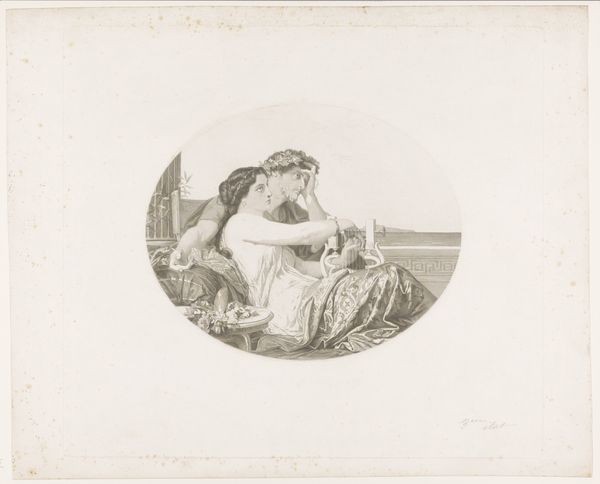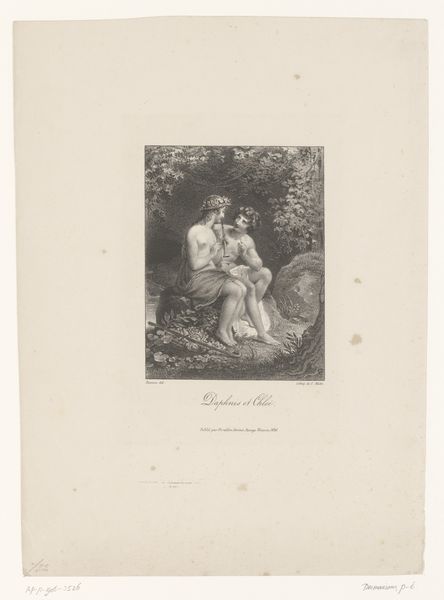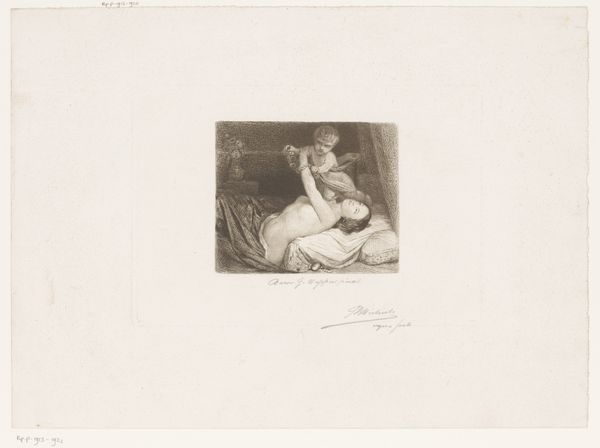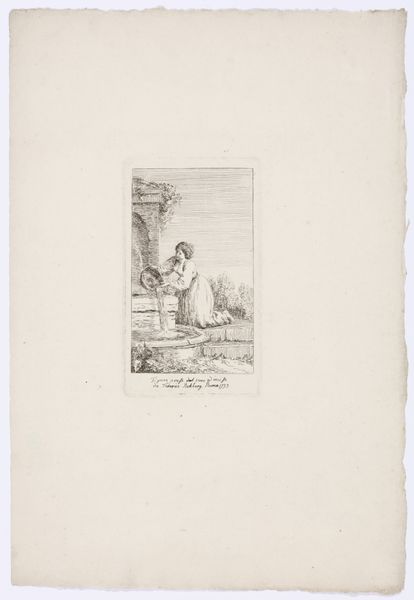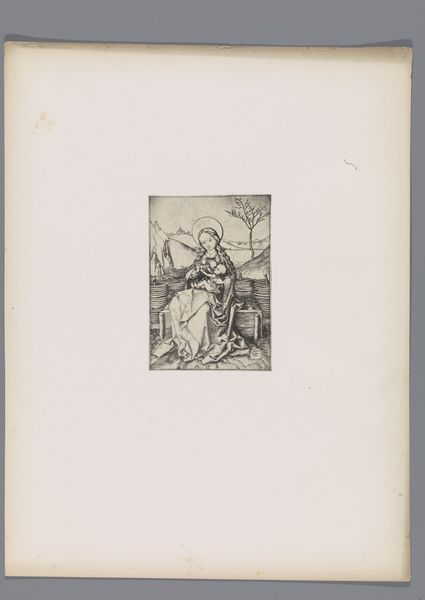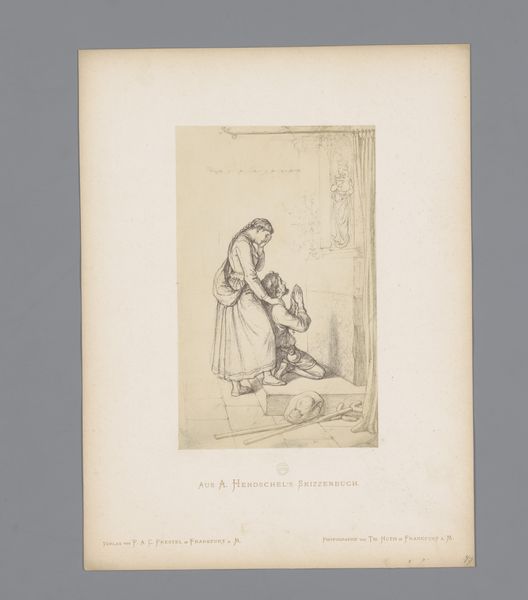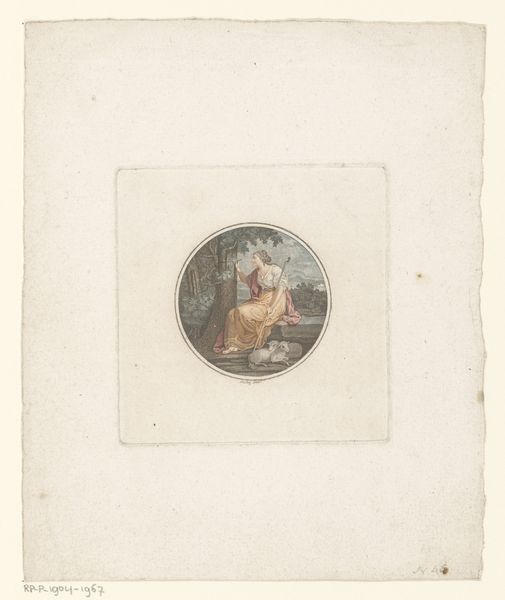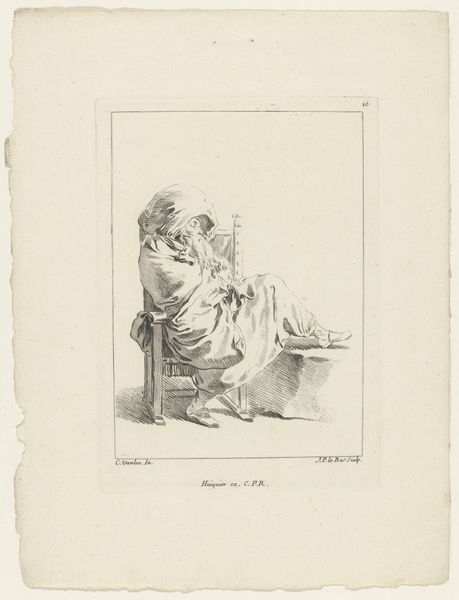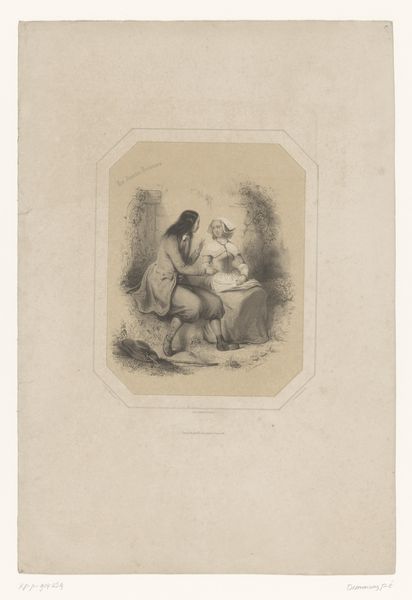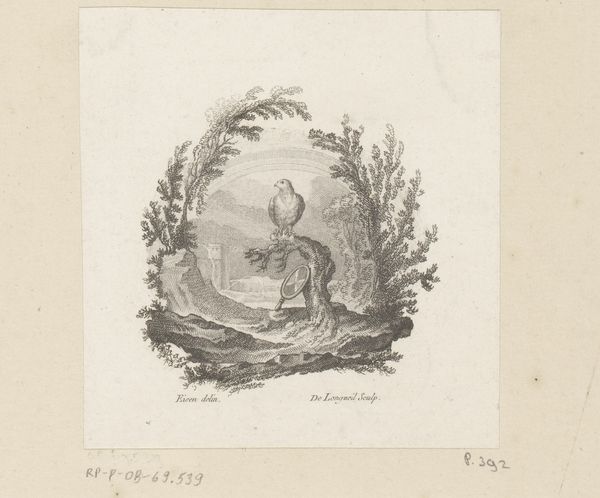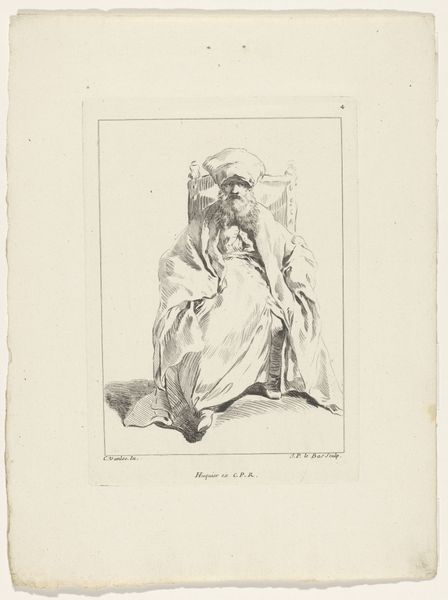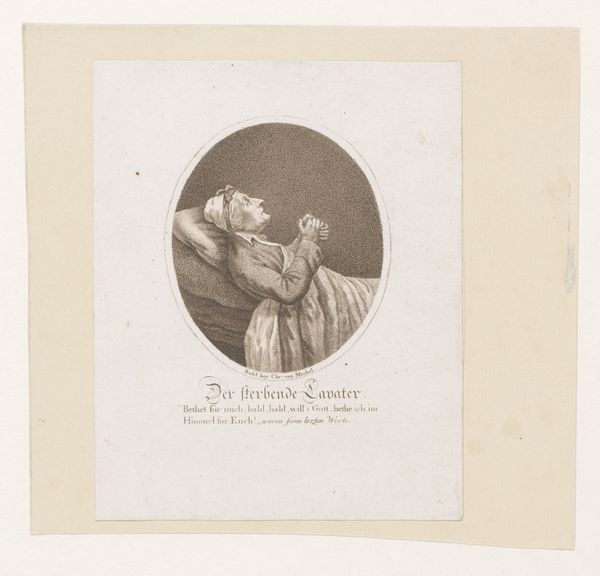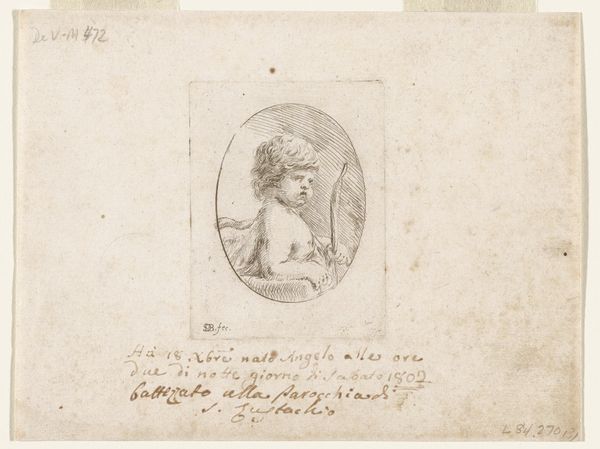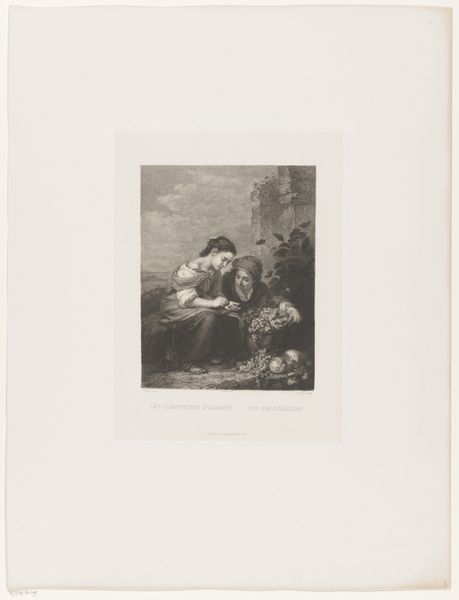
print, etching, engraving
#
portrait
#
narrative-art
# print
#
etching
#
figuration
#
classicism
#
academic-art
#
engraving
Dimensions: height 131 mm, width 139 mm
Copyright: Rijks Museum: Open Domain
Curator: Here we have Gustave Joseph Biot's print, "Aglaé en Bonifatius van Tarsus," likely created between 1843 and 1905. It's an etching and engraving currently housed at the Rijksmuseum. Editor: It strikes me as rather romantic, even sentimental. There's an intimacy in the close grouping of the figures and a definite classical sensibility. The linework itself has a softness, quite unlike a typical etching. Curator: Well, the blending of etching and engraving allows for subtle gradations of tone and detail, suggesting skilled labor. I am interested in the availability of the print. What societal function did an artwork like this serve? Was it for widespread distribution or more exclusive access? Editor: In Biot's era, prints like these played a key role in disseminating images to a wider public. Reproductions after popular salon paintings let viewers access high art at a lower cost. I suspect this circulated in bourgeois circles familiar with biblical narratives. Curator: But let’s consider the original image this reproduces! What of Cabanel's labor in producing this image? There is much hand work visible, each print becoming an aesthetic commodity consumed and valued by patrons. Editor: Indeed. But in terms of the visual culture, it presented the public with sanitized and beautified depictions of religious stories, conveniently aligning religious themes with aesthetic pleasure. Curator: Sanitized? Perhaps! And the material supports the reading: through mass distribution, moral virtues may well be delivered to bourgeois homes, in material form. I am thinking about the availability of art to a population beyond an elite few. Editor: Interesting point. Ultimately, images such as this one reinforce existing hierarchies through seemingly accessible means. The artist gains recognition, the consumer enjoys a moral uplift and tasteful print, and the institutions maintain their position. Curator: This gives us something to consider as we reflect on labor and art making in a specific era. It also causes us to ask ourselves: where does art truly exist: at its genesis or through its reproduction and proliferation? Editor: Right! Examining such works offers a crucial insight into the dialogue between art, history, and the visual economy, then and now.
Comments
No comments
Be the first to comment and join the conversation on the ultimate creative platform.
